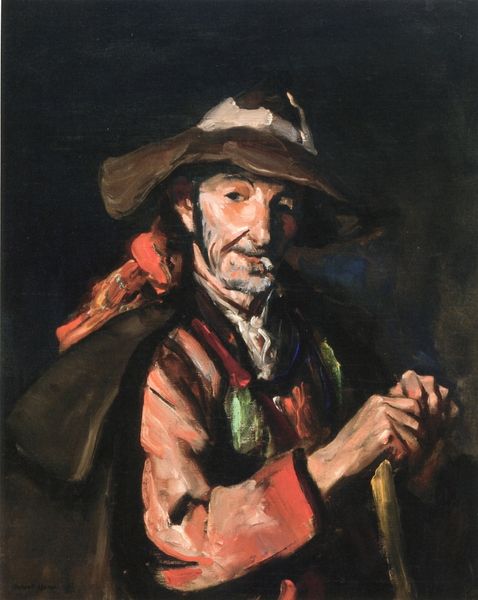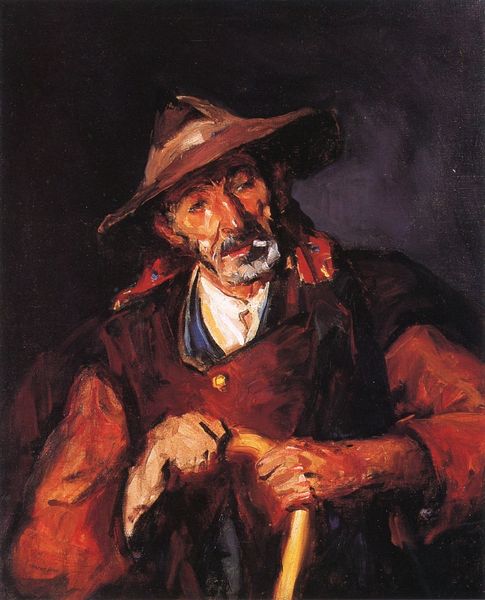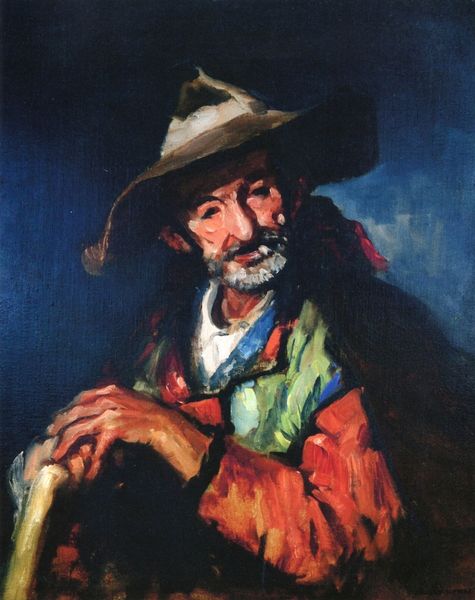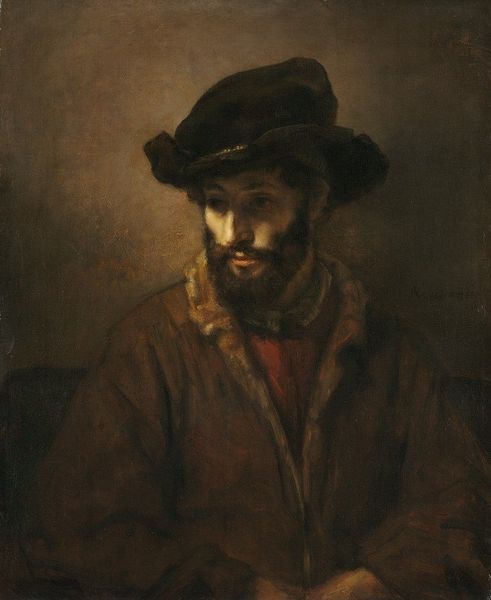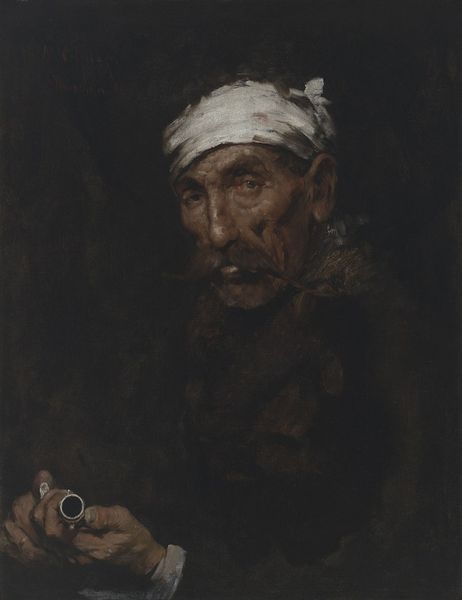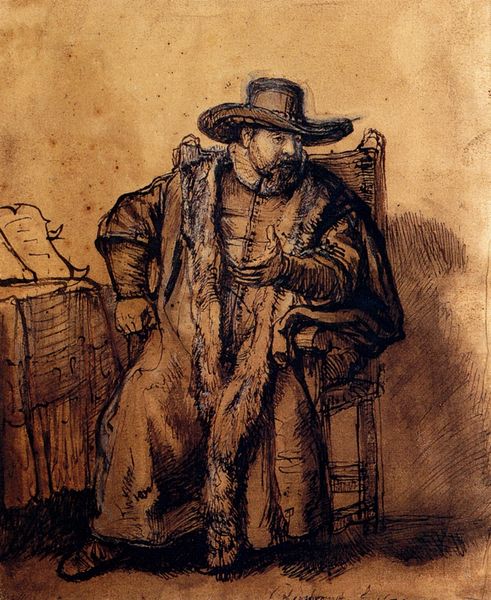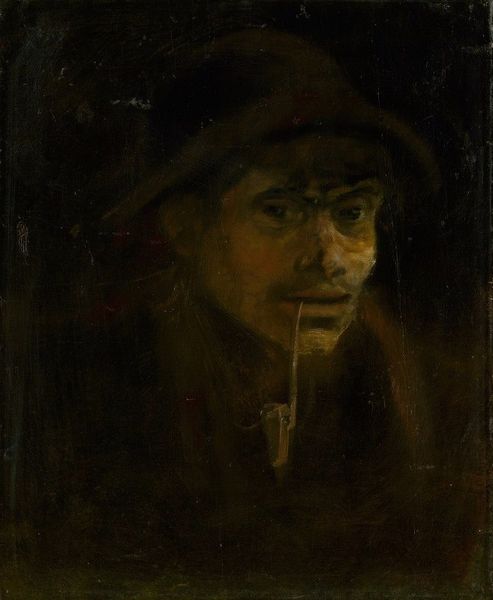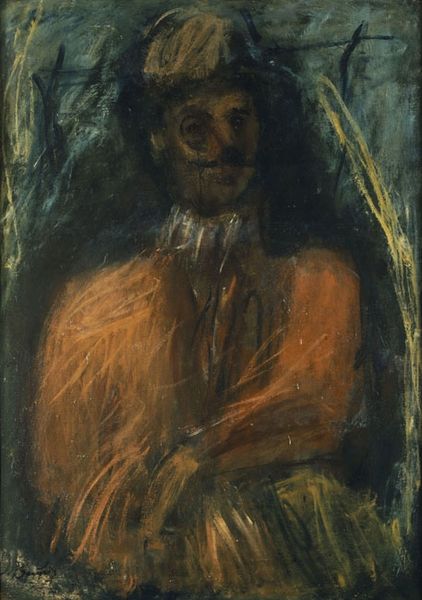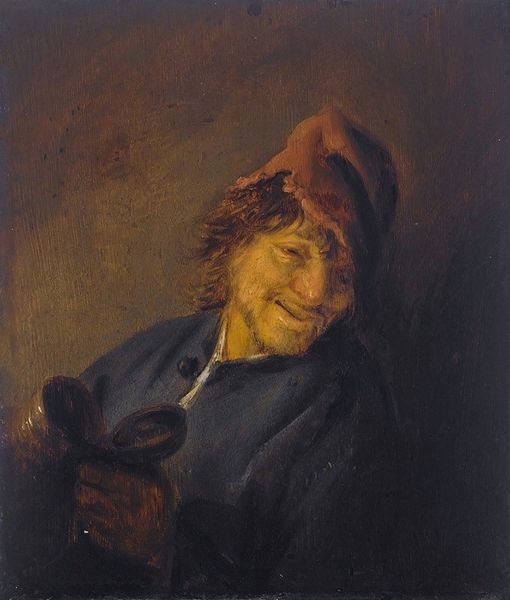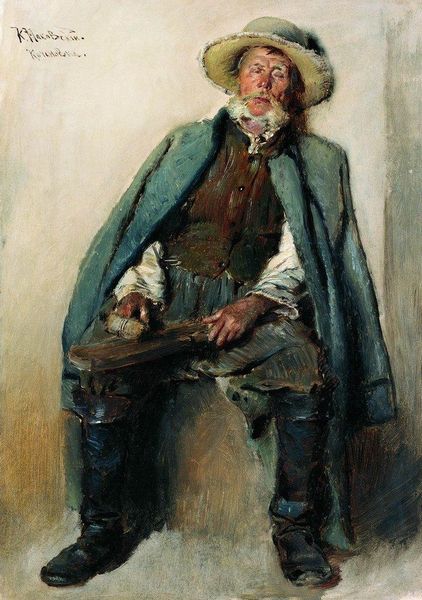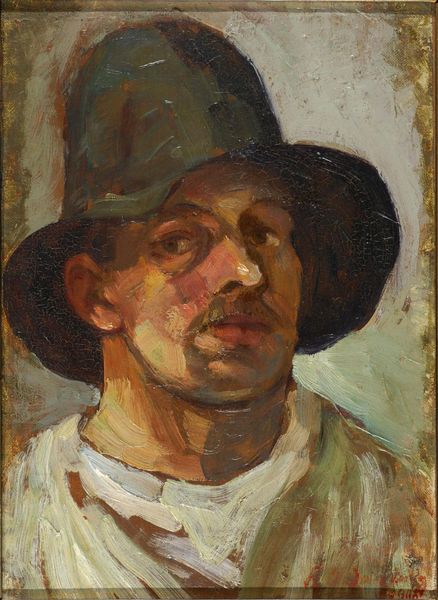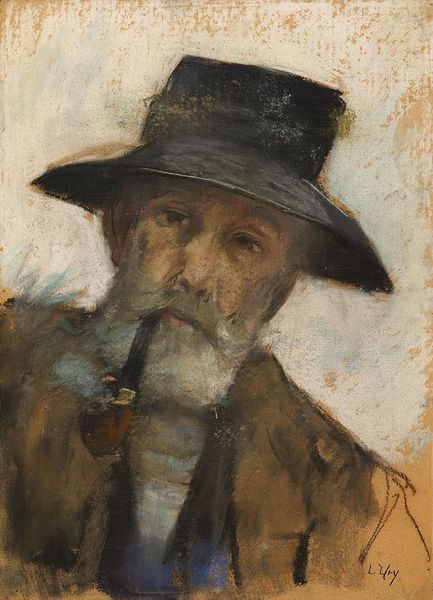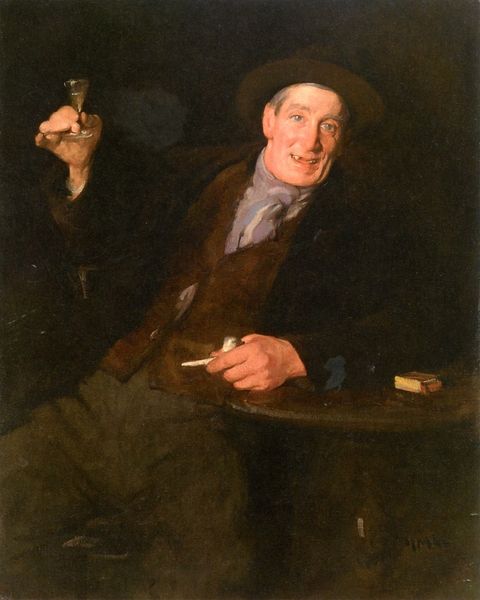
oil-paint
#
portrait
#
oil-paint
#
oil painting
#
ashcan-school
#
genre-painting
#
realism
Copyright: Public domain
Curator: Robert Henri painted this portrait, titled "Old Spaniard," in 1923. Henri was a key figure in the Ashcan School movement, known for its realistic portrayals of urban life. Editor: It's striking how much texture Henri manages to convey with those thick, visible brushstrokes. The layering of paint really brings the figure to life. You can almost feel the roughness of his worn jacket. Curator: Absolutely. The painting fits into the broader context of Henri's interest in capturing the essence of everyday people. The Ashcan School aimed to depict life as it was actually lived, moving away from idealized representations. This Spaniard probably represents a member of a growing working class at the turn of the century. Editor: What also strikes me is the choice of colours—those rich reds and greens juxtaposed with the dark background—they give a weightiness to the sitter while highlighting the materiality of the canvas, grounding this old Spaniard as a solid person in a palpable space. It’s not just about visual representation. Curator: True. Henri and the Ashcan artists sought authenticity. This subject is an interesting intersection of realism and genre-painting that often reflects the immigration waves of this time. He’s not idealized; you see the lines etched by age on his face, his posture... there's an honesty to the portrayal. Editor: There's something so compelling about the materiality here – the visible layering of the paint hints to the slow making of art—but also feels so quick and gestural. Look at the brushwork around the eyes: how they’re almost closed! His humanity resides in the crafting process. I love the raw character in that, and also love how Henri seems invested in representing it. Curator: Henri aimed to elevate the ordinary through art, showcasing that beauty and significance existed in every facet of society. The composition—especially how this work resides outside the boundaries of more academic traditions—represents more of a slice of everyday life than we had been previously allowed to see as ‘fine art.’ Editor: Agreed. You really get the sense of his individual lived experiences represented in the oil and canvas, and beyond the constraints or expectations of art and representation from his time. Curator: Exactly. It speaks volumes about what they felt was worthy of display in a museum—which in itself becomes a fascinating object to ponder! Editor: So true. Now, what’s next?
Comments
No comments
Be the first to comment and join the conversation on the ultimate creative platform.
